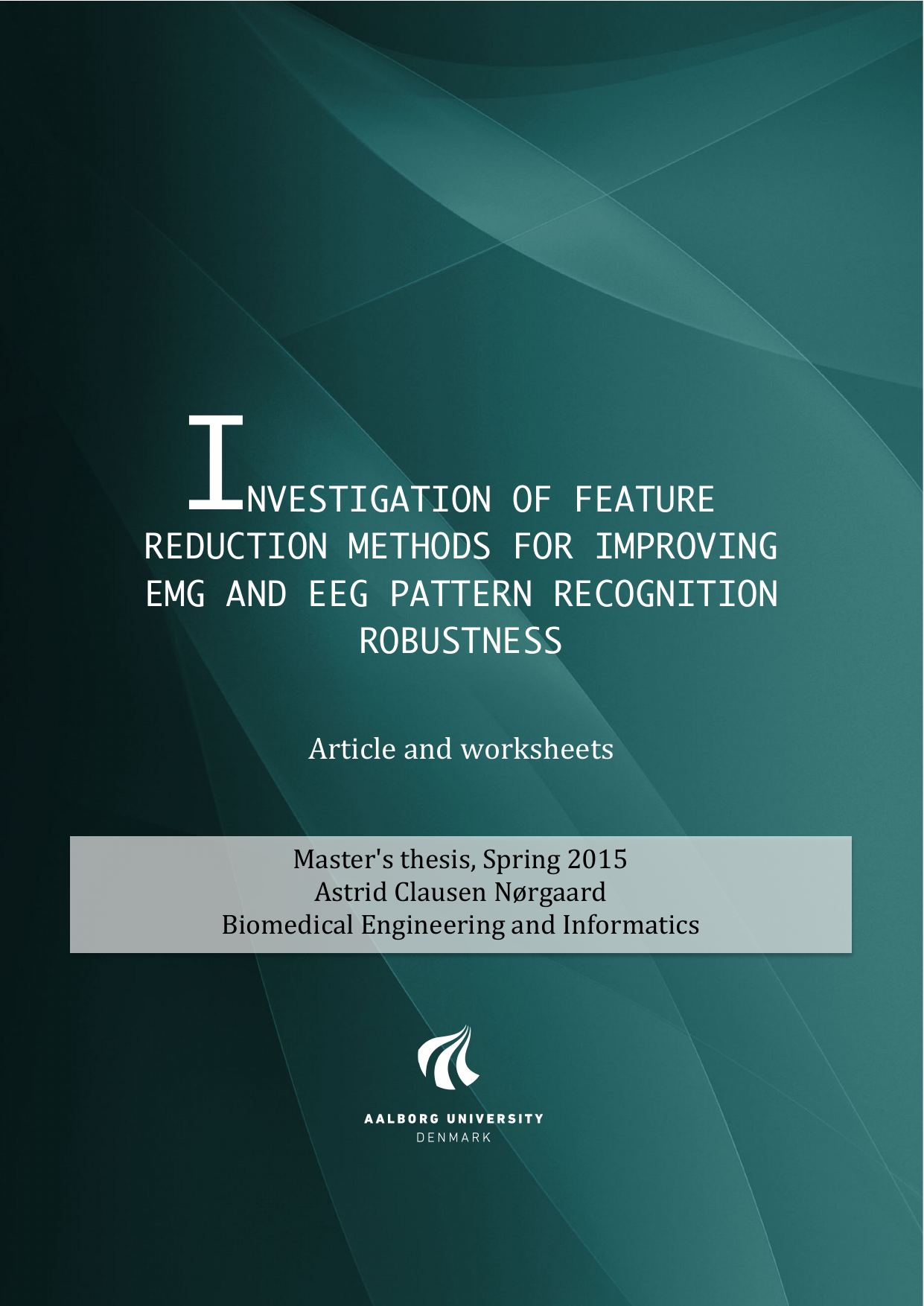
Investigation of features reduction methods for improving EMG and EEG pattern recognition robustness
Translated title
Reducering af dimensioner til forbedring af robustheden for EMG og EEG mønstergenkendelse
Author
Term
4. term
Publication year
2015
Submitted on
2015-06-03
Pages
54
Abstract
Robustness of pattern recognition receives little attention in literature dealing with feature reduction, despite that current literature reports inconsistency and day-to-day / session-to-session variation in biomedical signals. This article aims to investigate the robustness of eight feature reduction methods for data recorded over multiple days. The feature reduction methods were tested on two dataset: 1) Electromyography (EMG)-data recorded during three days, where eight subjects performed seven dierent hand movements and 2) Electroencephalography (EEG)-data recorded during seven days, where seven subjects performed two dierent dorsiexions. The results show that features reduction has a great impact on the performance and robustness of EMG and EEG classication. For EMG, Nonparametric discriminant analysis (NDA) showed high classication accuracies and was the most robust feature reduction method. For EEG, Kernel principal component analysis (KPCA) showed the highest classication accuracies and was among the most robust feature reduction methods. In conclusion, feature reduction must be included, when designing a classication system that is robust over time, but it is recommended to test the dierent methods for feature reduction, to nd the method that ts the given data the best.
Keywords
Documents
